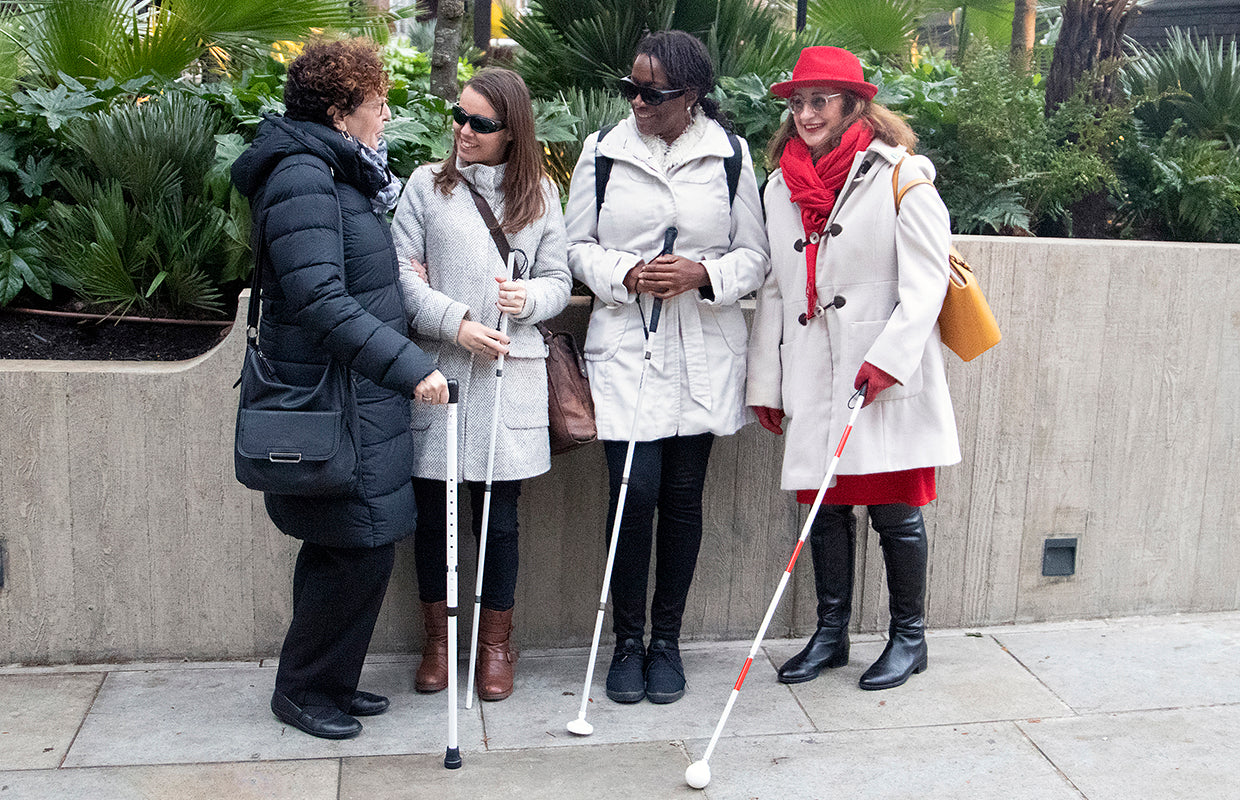Vital mobility tool, symbol of independence, and a cue for sighted people to act appropriately – the white cane always deserves appreciation. As White Cane Safety Day approaches on 15 October and the nights draw in, we celebrate the white cane and share some products to help you get the most from your cane.
Lyndon B Johnson proclaimed the first White Cane Safety Day in October 1964 – 61 years later, we’re delighted to still be honouring this vital tool and sharing some basic cane facts for anyone unfamiliar with white canes.
The most common white cane is a long cane, which is primarily a mobility tool used to detect objects in the path of the user. Most long canes can be folded away when not in use, although some people prefer a rigid, non-folding cane. As a rough guide, a long cane should reach from the user’s sternum to the floor, but fast walkers, for example, may choose a longer length of cane to help them detect obstacles in good time.
Long canes require a cane tip – most will hook on and require changing regularly as they wear out with use. People can choose from a wide range of cane tips to find the one that suits them best. Some are designed to roll as the cane moves, others are static. Usually, users will get to try different types of cane tip as part of the mobility training that is needed for using a long cane.
You can also buy long canes with extra functions - either extra engineering like the No jab cane (which has a shock absorber built in to the handle for when the cane gets stuck while you're moving), or hi-tech additions, like the WeWalk V2 smart cane (which alerts you overhead obstacles and can offer accessible, turn-by-turn navigation).
The two other types of white cane you may encounter are guide canes (shorter than long canes, and used primarily to scan for steps and kerbs although they can also be used diagonally across the body for protection, warning the user of obstacles immediately ahead) and symbol canes (whose primary use is to alert other people to the user’s visual impairment, and is not a mobility aid).
In some countries, white canes must be white by law, but in the UK users can choose to personalise their canes with one or more different colours. A cane with alternating white and red sections or stripes signifies that the user is deafblind.
You can also personalise your cane by choosing a wooden or cork handle, a crook handle, or a coloured golf-grip handle instead of the standard black golf-grip handle.
It’s a hard knock life being a white cane, but you can buy reflective tape and cane renewal kits to give your cane some TLC and a new lease of life.
Although many canes are sold with a CordLock device (a piece of plastic on the elastic cord that runs through the cane, and is designed to prevent the cord getting lost inside the shaft of the cane), it is still possible for the cord to slip out of reach when changing the cane tip. If this is a problem you recognise, you want to invest in a cord fisher – this thin metal tool has a hook for retrieving errant elastic!
You can also make yourself more visible in the dark with our bestselling Pharos cane light. This rechargeable LED light clips to your mobility cane to illuminate your path and let other walkers see you more easily.
How can sighted non-cane users make every day a white cane safety day?
- Be mindful of people using white canes (and guide dogs) and always yield the right-of-way.
- Do what you can to improve accessibility in public spaces – trim back overhanging hedges, put your bins away promptly, advocate for businesses to keep pavements as clear as possible.
- In indoor spaces, such as offices and restaurants, tuck your chair in when you leave the table or desk, and don’t leave bags and coats where they become trip hazards.
- Learn how to guide a blind or partially sighted person.
Let’s be safe out there…




